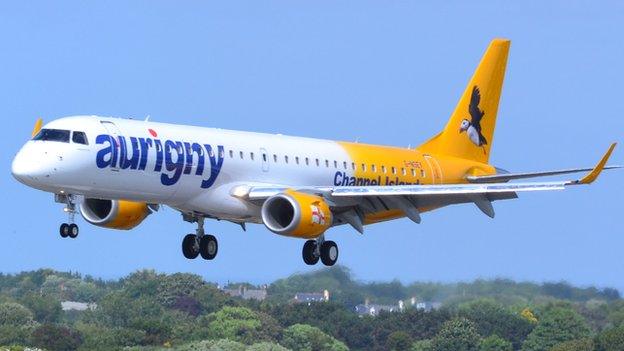Manchester-Guernsey pilot accused over ice diversion
- Published
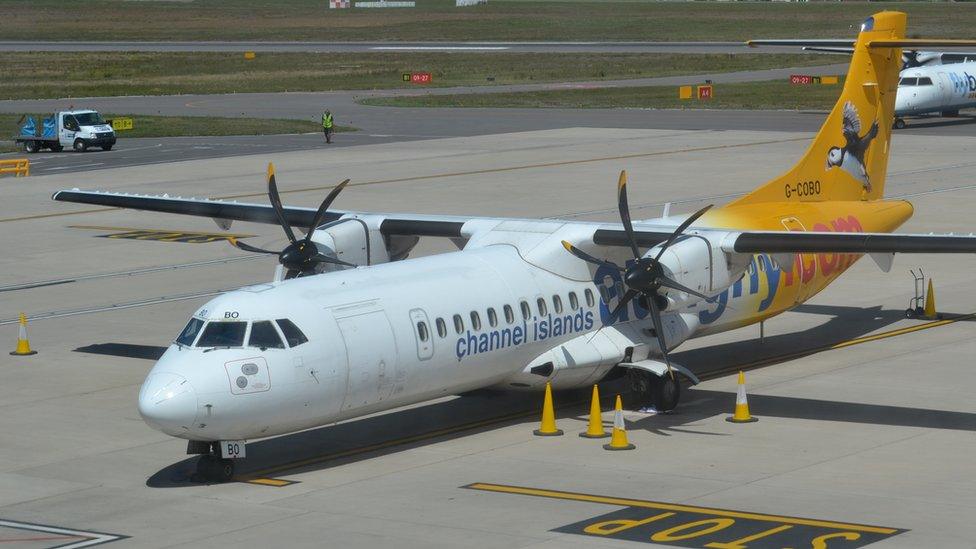
The Aurigny plane crew was the only one not to request de-icing or anti-icing on that morning
Poor decision-making by a pilot led to a commercial flight having to divert, investigators have said.
The Manchester to Guernsey Aurigny flight landed at East Midlands Airport on 4 March 2016.
The Air Accidents Investigation Branch concluded ice contamination was the cause of problems and could have been avoided if the aircraft had been de-iced.
A build-up of ice on the tail led to difficulties with pitch controls.
More on the ice incident, and other news
The AAIB report says aircraft handling firms at the airport said all other commercial aircraft departing on the morning of 4 March 2016 "sought de-icing/anti-icing before start-up".
The conditions were described as freezing with snow falling.
Nigel Moll, Aurigny's flight operations director, said: "As the report suggests, the incident was perceived to be the result of poor decision-making, in that the captain elected not to have the aircraft inspected by de-icing ground staff to effectively determine whether de-icing was appropriate or not."
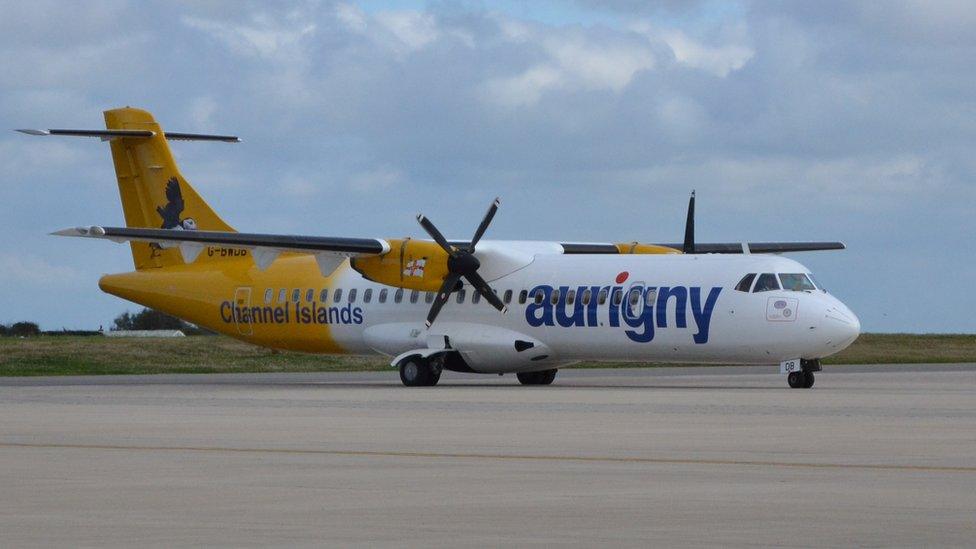
The plane, which can accommodate 72 passengers, was carrying 27 at the time
The investigators concluded: "A contributory factor may have been the crew's lack of experience operating aircraft in such conditions.
"The commander optimistically thought that lying snow would blow off the aircraft before rotation; an assessment that was flawed and a possible reflection on the training the pilots had received for such winter conditions."

Safety actions
Changes and extensions to pilot conversion training
Aurigny has improved winter awareness training for pilots, with a computer-based module to be completed before each winter season
Co-pilot provided with additional training before returning to duty
Aurigny reviewing when de-icing fluids are required
Aurigny to introduce better guidance for what to do in the aftermath of a serious incident
Manufacturer to make other operators aware of the circumstances

The report found it likely the pilot and co-pilot were "susceptible to 'confirmation bias'", and neither pilot "seemed to consider the possibility there might be unseen ice on the upper surfaces".
The manufacturer's investigation found the horizontal tailplane and elevator was disrupted by ice contamination from the start of the flight until the latter stages of the descent.
Mr Moll said: "We have clear procedures and training in place relating to the need to de-ice an aircraft prior to departure, and our expectation, in these weather conditions, would be for the aircraft to be inspected and, most likely, de-iced.
"However, in this case the captain, who had many years of prior experience with other airlines, exercised his own judgement."
He said the captain had since left the airline.
- Published4 October 2016

- Published10 August 2016
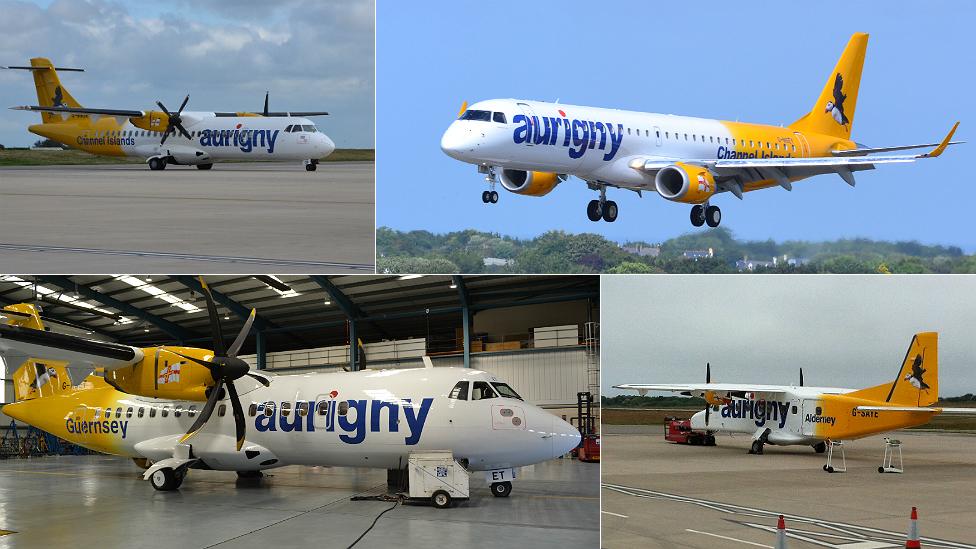
- Published22 March 2016
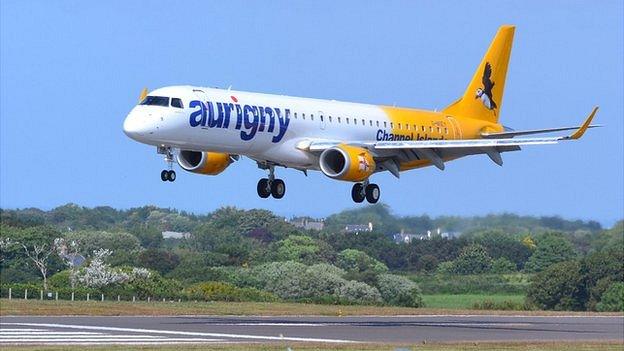
- Published14 August 2015
